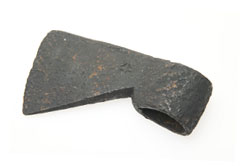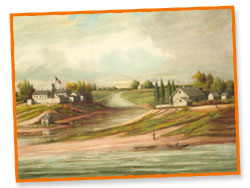Trading Mystery
Elementary: Grades 3–4
Background Information
Fur Trade
During the 1800s, the fur trade was the most important business in Chicago! Beavers and other animals lived here and were caught in traps. Their fur was used to make hats and clothing. American Indians exchanged the furs at trading posts for a variety of goods including tools, weapons, blankets, cooking pots, and glass beads. The traders earned their living by working for companies that ran the trading posts and sold the furs to hat and clothing makers.
The fur trade lasted more than 200 years and was organized by many different companies. The American Fur Company was the last big fur-trade company in northern Illinois. In 1833, a treaty was signed that ended all American Indian land claims in Illinois, opening the way for large numbers of white settlers to move here. As more settlers came to this region to buy and develop land, they reduced the natural habitat in which the animals lived. Animals became harder to find in this area, and the fur-trade era ended in Chicago.
Fort Dearborn
In 1803 Captain John Whistler arrived in Chicago to build Fort Dearborn. The United States government decided to build the fort to protect the fur trade and the land in this area. By 1808 the fort stood on a small hill on the south bank of the Chicago River. American soldiers and their families lived inside the fort. Near the fort there were homes and businesses including the fur trade of John Kinzie.
During the War of 1812, Fort Dearborn was burned to the ground. The U.S. army returned in 1816 and built a second Fort Dearborn. In 1857, with the end of the fur trade and no military problems, the fort was no longer needed, and it was torn down.
Source: The Electronic Encyclopedia of Chicago
Downloads (pdf)


